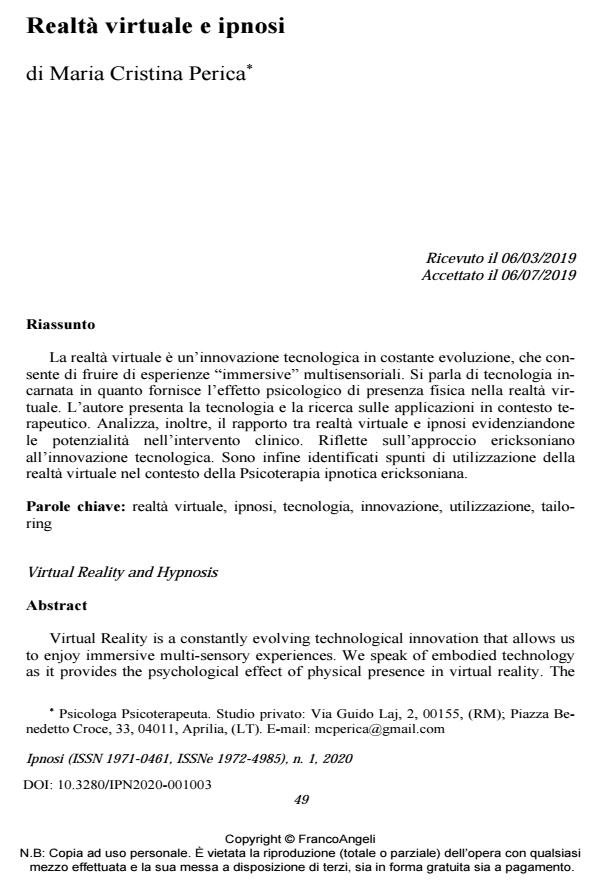Virtual Reality and Hypnosis
Journal title IPNOSI
Author/s Maria Cristina Perica
Publishing Year 2020 Issue 2020/1
Language Italian Pages 12 P. 49-60 File size 211 KB
DOI 10.3280/IPN2020-001003
DOI is like a bar code for intellectual property: to have more infomation
click here
Below, you can see the article first page
If you want to buy this article in PDF format, you can do it, following the instructions to buy download credits

FrancoAngeli is member of Publishers International Linking Association, Inc (PILA), a not-for-profit association which run the CrossRef service enabling links to and from online scholarly content.
Virtual Reality is a constantly evolving technological innovation that allows us to enjoy immersive multi-sensory experiences. We speak of embodied technology as it provides the psychological effect of physical presence in virtual reality. The objective of this paper is to present this technology and research on therapeutic applications. The author analyzes the relationship between virtual reality and hypnosis presenting its therapeutic applications. Moreover, utilization cues of vir-tual reality in the context of Ericksonian hypnotic psychotherapy are presented, with references to advantages, resources and areas of development.
Keywords: Virtual reality, hypnosis, technology, innovation, utilization, tailoring
Maria Cristina Perica, Realtà virtuale e ipnosi in "IPNOSI" 1/2020, pp 49-60, DOI: 10.3280/IPN2020-001003